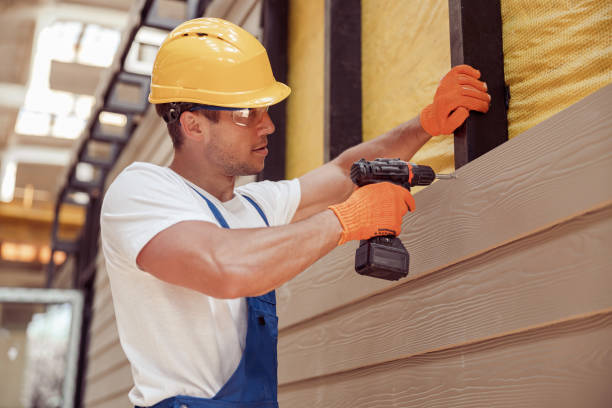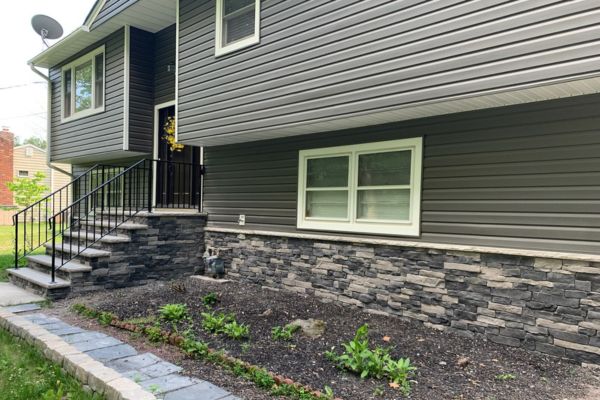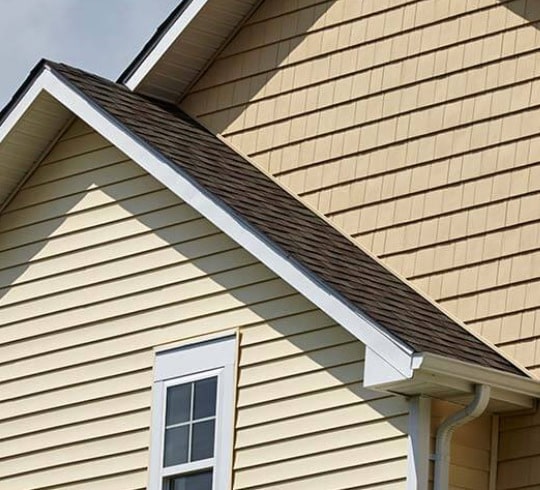Morris Siding Contractor Committed to Excellence in Every Project
Morris Siding Contractor Committed to Excellence in Every Project
Blog Article
The Essential Overview to the Various Sorts Of Home Siding and Their Distinct Advantages
In the world of home renovation, picking the ideal house siding is a critical decision that influences both aesthetic charm and practical performance. With so numerous options to think about, which house siding product genuinely stands out for your certain task?
Timber Siding
Wood siding, a preferred option for household exteriors, provides a classic aesthetic that integrates all-natural charm with architectural integrity. This siding material is offered in numerous designs, including clapboard, shingles, and board-and-batten, allowing house owners to customize their appearance to match their layout preferences. Wood house siding is generally crafted from durable varieties such as cedar, redwood, or yearn, which are known for their strength and ability to hold up against environmental stressors.
Among the primary advantages of wood home siding is its outstanding insulation residential properties, which can add to power effectiveness and reduced home heating costs. In addition, timber home siding is biodegradable, making it an ecologically pleasant alternative when sourced sustainably. Normal maintenance, consisting of paint or staining, can lengthen its lifespan and improve its appearance, allowing homeowners to maintain the natural charm of the timber.
Nonetheless, possible disadvantages consist of vulnerability to parasites, rot, and weather condition damage, requiring appropriate therapy and maintenance - morris siding contractor. In spite of these worries, when appropriately taken care of, wood exterior siding can provide a resilient and gorgeous service that boosts the personality of a home while offering a cozy, inviting ambience

Plastic Siding
Vinyl exterior siding has become a leading selection for homeowners seeking a low-maintenance outside option that integrates resilience and price. This versatile material is crafted from polyvinyl chloride (PVC), making it immune to numerous weather conditions, consisting of moisture and UV rays. Because of this, vinyl siding does not warp, rot, or fade, making sure resilient aesthetic appeal.
One of the key advantages of vinyl exterior siding is its extensive series of shades and styles, enabling homeowners to attain the preferred search for their home without the requirement for constant repainting. Additionally, plastic home siding is easy to set up, which can significantly minimize labor prices throughout building and construction or improvement jobs.
Plastic home siding likewise adds to energy effectiveness. Many alternatives attribute insulation backing, which enhances thermal efficiency, aiding to preserve comfortable interior temperature levels and possibly decreasing power bills. Furthermore, its smooth surface area promotes simple cleaning, calling for only routine washing with a yard tube to get rid of dust and particles.
Fiber Concrete House Siding
Fiber concrete exterior siding has gained grip among homeowners and contractors alike because of its impressive combination of resilience and visual convenience. Composed of a mix of sand, cellulose, and concrete fibers, this siding alternative is crafted to stand up to extreme climate condition, consisting of high winds, heavy rainfall, and temperature level fluctuations, making it a long-lasting selection for property exteriors.

One of the main benefits of fiber concrete exterior siding is its resistance to pests, such as termites, and its non-combustible nature, offering boosted fire safety and security. morris siding contractor. Additionally, it is offered in a wide variety of structures, shades, and styles, permitting house owners to achieve their preferred visual without compromising efficiency
Another benefit is its low upkeep requirements; fiber concrete home siding usually requires painting or discoloration every 5-10 years, which is less constant than other products. Its long continue reading this life contributes to a reduced total expense of ownership, as it minimizes the requirement go to these guys for constant repair services or replacements.
Inevitably, fiber cement house siding represents an exceptional financial investment for those seeking a resistant, attractive, and flexible outside option, integrating both form and function to boost the home's visual charm.
Steel Siding
The attraction of metal siding exists in its robust sturdiness and modern-day visual charm, making it a preferred option for contemporary architecture. Available in materials such as light weight aluminum and steel, metal exterior siding provides a variety of colors and coatings, permitting homeowners to achieve an individualized appearance that enhances their layout vision.

Power performance is one more considerable advantage, as many steel exterior siding products are made with insulation options that help control indoor temperature levels. This can result in lowered energy costs with time. Furthermore, steel home siding is commonly recyclable, making it an environmentally pleasant option for sustainability-minded home owners.
The setup procedure for steel siding can be fairly simple, causing a quicker turn-around time for construction jobs. Overall, steel siding combines performance and design, making it a sensible option for those looking for a visually appealing and enduring exterior finish.
Brick and Rock House Siding
Block you could check here and rock house siding stands apart as a classic choice that improves the visual beauty of any home. Recognized for their sturdiness and reduced upkeep, these products give an exceptional roi while boosting the residential property's aesthetic appeal. Offered in different shades, appearances, and patterns, brick and rock can be tailored to fit varied architectural designs, from typical to modern.
Among the key advantages of brick and rock siding is their energy performance. Both materials possess all-natural shielding buildings that help control interior temperatures, potentially minimizing home heating and cooling costs. Furthermore, they provide remarkable fire resistance contrasted to other house siding options, adding to enhanced security.
An additional advantage is their longevity. Brick and rock can last for years, frequently needing very little upkeep beyond occasional cleaning. Unlike wood exterior siding, they are invulnerable to bugs and rot, making certain a long-lasting exterior that withstands the elements.
Conclusion
In recap, the option of siding significantly influences a home's visual charm, energy performance, and upkeep demands. Each kind of home siding-- whether wood, vinyl, fiber brick, metal, or cement and rock-- provides one-of-a-kind benefits customized to different homeowner choices and environmental problems.
One of the primary benefits of timber home siding is its excellent insulation homes, which can add to energy performance and lower heating expenses. In addition, wood home siding is biodegradable, making it an ecologically pleasant option when sourced sustainably.One of the main advantages of metal exterior siding is its resistance to numerous ecological elements.Power performance is another substantial advantage, as lots of steel exterior siding products are made with insulation options that help control interior temperature levels. Each type of exterior siding-- whether timber, plastic, fiber cement, brick, or steel and stone-- uses one-of-a-kind advantages tailored to numerous homeowner choices and ecological conditions.
Report this page